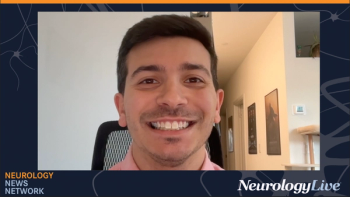Newly published in JAMA Neurology, a pragmatic, stepped-wedge comparative effectiveness trial (NCT03076671) revealed that patients with Parkinson disease and related disorders (PDRD) undergoing a palliative care intervention had better quality of life at 6 months and were more likely to complete advance directives. These findings suggest that palliative care education of community neurologists and remote provision of team-based palliative care is feasible and may improve outcomes in patients with PDRD in community settings.1
In this pragmatic trial of 359 patients with PDRD (men, n = 233 [64.9%]; mean age, 74.0 [SD, 8.8] years) and 300 caregivers, participants who received the intervention had better quality of life after 6 months compared with usual care (Quality of Life in Alzheimer Disease Scale [QOL-AD] score, 0.09 [95% CI, -0.63 to 0.82] vs -0.88 [95% CI, -1.62 to -0.13]; treatment effect estimate, 0.97; 95% CI, 0.07-1.86; P = .03). Notably, investigators observed no significant difference in caregiver burden (Zarit Burden Interview score, 1.19 [95% CI, 0.16 to 2.23] vs 0.55 [95%, -0.44 to 1.54]; treatment effect estimate, 0.64; 95% CI, -0.62 to 1.90; P = .32).
Clinical Takeaways
- Palliative care interventions, including education for community neurologists and telehealth-based support, demonstrate the potential to improve the quality of life for patients with Parkinson disease and related disorders (PDRD).
- The study underscores the importance of ongoing coaching and support for community clinicians to effectively incorporate palliative care skills into their practice.
- While the trial indicates promising results, further research is needed to define the boundaries and roles of primary palliative care versus specialist palliative care in integrated interventions for patients.
“These results show a slight comparative advantage to our novel palliative care intervention versus standard care for people with PDRD for several outcomes, including patient QOL and advance directive completion. We also saw a modest impact of palliative care training on clinician knowledge and attitudes,” lead author Benzi M. Kluger, MD, MS, founding director of the Palliative Care Research Center and Neuropalliative Care Division at University of Rochester Medical Center, and colleagues wrote.1 “On the whole, these results suggest the potential for integrated palliative care interventions to improve outcomes for persons receiving care in community settings as well as a need to optimize the intensity and implementation of such interventions”
This pragmatic trial enrolled and observed participants with PDRD and moderate to high palliative care needs from 19 community neurology practices supported by palliative care teams at 2 academic centers between March 8, 2017, and December 31, 2020. The participants received usual care, or the intervention, based on when their community neurologist was randomized to start the intervention. The intervention included palliative care education for community neurologists and team-based palliative care support via telehealth. The primary outcomes of the study were differences at 6 months in patient quality of life, measured by the QOL-AD, and caregiver burden, measured by the Zarit Burden Interview, between the intervention and usual care which were analyzed between January 2021 and September 2023.
READ MORE: Patient Dosing Commenced in Phase 2 ASCEND Study of Parkinson Agent CVN424
According to available data on 271 patients, 113 of 155 patients (72.9%) assigned to standard care and 84 of 116 (72.4%) assigned to palliative care had completed advance directives prior to starting the study (P = .93). In comparison with participants who did not cross over and did not complete advance directives at baseline, those who received palliative care were significantly more likely to have completed advance directives (19 of 38 [50%] vs 6 of 31 [19%]; P = .008) and health care proxy (24 of 48 [50%] vs 13 of 48 [27%]; P = .02) but not state-specific living wills (24 of 73 [33%] vs 21 of 84 [25%]; P = .28) at 6 months.
Investigators observed a significant increase in the mean percentage correct on knowledge tests between the pretraining and posttraining periods, from an estimated 55.5% (95% CI, 51.3-59.7) to 66.5% (95% CI, 62.8-70.2; estimate of mean change, 11.0%; 95% CI, 6.6-15.4; P <.001). Despite this result, additional data showed that the improvement wore off after 6 months posttraining (correct responses, 59.2%; 95% CI, 53.4-65.0; estimate of mean change, −7.3%; 95% CI, −12.8 to −1.8; P = .01). All told, the items related to spiritual well-being and hospice were the ones most missed before and after the intervention.
No differences were noted in the efficacy of the intervention on patient or caregiver outcomes in comparison with the practices of high versus low perceived engagement for the intervention as rated by academic coaches. The authors did observe an effect of real-world practice on intervention efficacy, as demonstrated by a statistically significant benefit in patient outcomes among practices that went 13 months or longer posttraining in comparison with their first year after the intervention(QOL-AD: estimate, 1.39; 95% CI, −0.26 to 2.51; P = .02). Additionitionally, nonsignificant better caregiver outcomes at 12 months were also observed (ZBI: estimate, −3.52; 95% CI, −7.1 to 0.04; P = .05).
The design of the study is a limitation of the research since it may have raised the potential for external temporal trends to affect results. Notably, the COVID-19 pandemic could have contributed to increased burden for participants receiving palliative care at this time and fewer referrals from rural practices as the study progressed.2,3,4 In the trial, the investigators could not control how clinicians incorporated or failed to incorporate palliative care skills into their practice. In addition, there were low numbers of rural and racial and ethnic minority group participants and the practices participating in this study and the patients interested in research may also not be reflective of general care, both limiting generalizability.
“Palliative care training of community neurologists and provision of specialist palliative care via telemedicine may improve select outcomes in patients with PDRD. Opportunities to optimize this intervention include more intensive education, ongoing coaching to reinforce palliative care skills in community clinicians, more intensive and regular specialist palliative care support, outreach efforts to reach underserved populations, and better coordination between specialist palliative care and community teams,” Kluger, also the president of the International Neuropalliative Care Society, et al noted.1 “More research is needed to better define the limits and role of primary palliative care versus specialist palliative care in integrated interventions.”
REFERENCES
1. Kluger BM, Katz M, Galifianakis NB, et al. Patient and Family Outcomes of Community Neurologist Palliative Education and Telehealth Support in Parkinson Disease. JAMA Neurol. 2023;e234260. doi:10.1001/jamaneurol.2023.4260
2. Hermanowicz N, Ospina MC, Torres-Yaghi Y, et al. Impact of Isolation During the COVID-19 Pandemic on the Patient Burden of Parkinson's Disease: A PMD Alliance Survey. Neuropsychiatr Dis Treat. 2022;18:633-643. Published 2022 Mar 23. doi:10.2147/NDT.S351691
3. Macchi ZA, Ayele R, Dini M, et al. Lessons from the COVID-19 pandemic for improving outpatient neuropalliative care: A qualitative study of patient and caregiver perspectives. Palliat Med. 2021;35(7):1258-1266. doi:10.1177/02692163211017383
4. Larson AE, Zahnd WE, Davis MM, et al. Before and During Pandemic Telemedicine Use: An Analysis of Rural and Urban Safety-Net Clinics. Am J Prev Med. 2022;63(6):1031-1036. doi:10.1016/j.amepre.2022.06.012





































